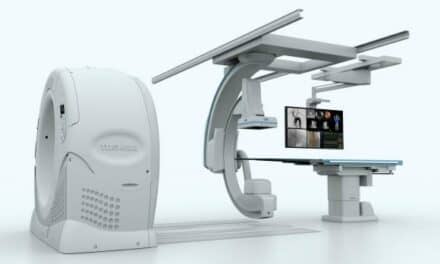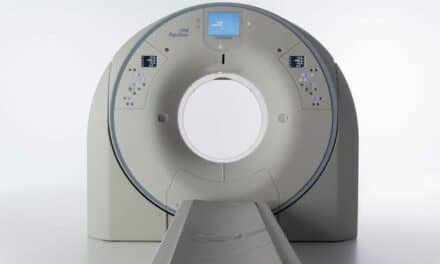Waukesha, Wis.-based GE Healthcare has launched Revolution Ascend with Effortless Workflow, which offers clinicians a range of artificial intelligence technologies that automate and streamline tasks. Moreover, the CT system’s new 75 cm wide-gantry, 40 mm detector coverage, and lower table position are designed to accommodate high body mass index (BMI) patients as well as trauma cases that would otherwise be too delicate to maneuver in a smaller size gantry.
For nearly 50 years, CT has proven to be a vital imaging tool used by clinicians to detect cancer, stroke, heart conditions, and other diseases. However, as CT procedure volume grows—reaching an all-time high ahead of the COVID-19 pandemic—so too does the need to optimize CT protocols and expand patient positioning options to help expedite exams and accommodate more patients.
“The most time-consuming part of the CT experience isn’t the scan itself, but the steps that fall outside the scan,” explains industry expert Timothy P. Szczykutowicz, PhD, director of clinical operations and the CT Protocol Project at the University of Wisconsin School of Medicine and Public Health as well as author of The CT Handbook: Optimizing Protocols for Today’s Feature-Rich Scanners.
He adds, “Within a typical 10-30-minute CT exam, the scan itself only takes a few minutes and the remainder of the time is dedicated to patient prep—including positioning the patient and identifying the correct protocols and settings, plus image reconstruction and report time. Historically, these have been manual processes, putting them at risk of human error; however, AI offers new opportunities to automate workflows and expedite exams with the same or better results.”
Revolution Ascend helps address these challenges with GE Healthcare’s Effortless Workflow, a new suite of AI solutions that personalize scans accurately and automatically for each patient while requiring less effort from the CT technologist. It starts with the technologist using the system’s attached bar code reader to scan the patient’s chart or tag and personalize each exam: automatically pulling up the patient’s information and suggesting relevant protocols.
The CT technologist can then initiate Auto Positioning, which uses real-time depth-sensing technology to generate a 3D model of the patient’s body and a deep learning algorithm to determine the correct table elevation and cradle movements to align the center of the scan range with the isocenter of the bore. Once the patient is ready to be scanned, advanced tools embedded in the new Clarity Operator Environment provide optimal scan range settings, dose, and image quality for each patient.
Altogether, Effortless Workflow’s AI-based features streamline the entire CT process by automatically:
- Positioning patients with 94% auto centering accuracy within +/- 2 cm
- Suggesting protocols with 90% accuracy
- Automating and expediting workflows with a 66% reduction in clicks
- Saving 56% of time for scan settings and 21% for the entire exam
- Reducing up to 91% image noise at the same dose
- Improving spatial resolution up to 2x at the same image quality
“Having Revolution Ascend is like having an extra set of hands—which are much needed in today’s healthcare environment,” says Gladys Farias, imaging services manager at Baptist Health in Miami—one of the first installation sites for Revolution Ascend. “Not only do the system’s intelligent solutions help us expedite exams, but they also enable us to deliver a more comfortable and personalized experience for each patient. Technologists love it for its simplicity. Clinicians love it for its results. And patients love it for its fast exams and comfort.”




